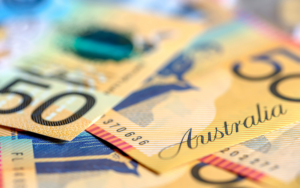Key takeaways
-
Having an emergency fund can help you maintain your everyday life as you navigate through a crisis, like losing your job, without causing you to tumble into debt
-
Ideally, you want to have enough stashed away to cover all your daily expenses for a few months
-
It’s important to have a dedicated account for your emergency funds so you don’t feel tempted to access the money unless it’s for emergency reasons.
With the number of unpredictable events that have happened in the past few years from COVID to inflation, being financially prepared for a crisis has never been more important.
If an emergency was to happen like an unexpected job loss, car repair, or illness, having an emergency fund can help you maintain your everyday life as you navigate through it, without causing you to tumble into debt.
Here’s some tips for building an emergency fund so you’ll be able to weather the financial challenges life may throw your way.
What your emergency fund should cover
Your emergency fund should cover the basics so you can still meet your financial obligations if your circumstances change unexpectedly.
Some of the basic expenses you may want to consider are:
-
mortgage or rent
-
utility costs (electricity, gas, internet and phone bills)
-
basic food and household items
-
travel expenses like petrol or public transport
-
car, home and life insurance if applicable
-
personal loan and credit card repayments
-
urgent car repairs or medical bills.
How to save for your emergency fund
It can be hard to squeeze out a few dollars from each pay cheque to funnel into an emergency savings account, especially if you’re barely able to make ends meet.
Here’s a few tips that may help to keep you on track to meet your savings goal:
-
Create a budget: this will help you understand what you’re currently earning versus spending, and where you may be able to make savings to allocate to your emergency fund
-
Set a low initial target: start with a low target for your emergency fund like $1,000. This is enough to cover a car or home repair. You can then work your way up slowly. For instance, if you were to save around $85 each month, you could reach $1,000 in a year
-
Funnel your extra cash: when you receive an income tax refund or bonus at work, instead of spending the extra cash, you can use this extra money to boost your emergency savings fund
-
Automate deposits: approach your fund as a bill by making regular payments into it. This will help you prioritise where your money goes
-
Consider cutting back on your expenses: review your utility providers to make sure you’re getting the best deal and plan out your meals to reduce wasting food.
How much should you save
This is really dependant on your basic living costs and what you think you’ll need to get through an emergency.
Ideally, you want to have enough stashed away to cover all your daily expenses for a few months. This might take a while to build up, so it’s important to start out small and build from there.
Where should you keep it
It’s important to have a dedicated account for your emergency funds so you don’t feel tempted to access the money unless it’s for emergency reasons.
If you have a mortgage, you could consider using an offset account. By depositing money into an account attached to your home loan, you can reduce your interest as the loan principal is balanced out by this additional sum.
Alternatively, you could set up a savings account with high interest and no ongoing fees so your money is still growing while in hibernation.
Seek help from a professional
If you value the experience of experts in other aspects of your life, don’t discount it when it comes to managing your life savings.
Financial advisers can help you with all aspects of your financial life—savings, insurance, debt—while keeping you on track to achieve your goals.
More importantly, they can answer questions like:
-
What age can I stop working and retire?
-
What strategies can I use to build my wealth?
-
How can I ensure my wealth is transferred to my children?
Bottom line: having an emergency savings fund means if, for example, your car breaks down or you’re made redundant, you won’t have to squeeze those expenses onto a credit card. Instead, you can take care of the bills yourself without having to depend on borrowed money. Speak to us on (02) 9587 7750 for more help.
Source: MLC August 2022
Important information and disclaimer
This article has been prepared by NULIS Nominees (Australia) Limited ABN 80 008 515 633 AFSL 236465 (NULIS) as trustee of the MLC Super Fund ABN 70 732 426 024. NULIS is part of the group of companies comprising Insignia Financial Ltd ABN 49 100 103 722 and its related bodies corporate (‘Insignia Financial Group’). The information in this article is current as at July 2022 and may be subject to change. This information may constitute general advice. The information in this article is general in nature and does not take into account your personal objectives, financial situation or needs. You should consider obtaining independent advice before making any financial decisions based on this information. You should not rely on this article to determine your personal tax obligations. Please consult a registered tax agent for this purpose. Opinions constitute our judgement at the time of issue. The case study examples (if any) provided in this article have been included for illustrative purposes only and should not be relied upon for decision making. Subject to terms implied by law and which cannot be excluded, neither NULIS nor any member of the Insignia Financial Group accept responsibility for any loss or liability incurred by you in respect of any error, omission or misrepresentation in the information in this communication.



